Speakers

Oscillators and Traveling Waves in Machine Learning
by Max Welling | CTO | CuspAI & Professor | University of Amsterdam
Show infoBiography:
Prof. Dr. Max Welling is a full professor and research chair in machine learning at the University of Amsterdam and a Merkin distinguished visiting professor at Caltech. He is co-founder and CTO of the startup CuspAI in Materials Design. He is a fellow at the Canadian Institute for Advanced Research (CIFAR) and the European Lab for Learning and Intelligent Systems (ELLIS) where he served on the founding board. His previous appointments include Partner and VP at Microsoft Research, VP at Qualcomm Technologies, professor at UC Irvine.
He finished his PhD in theoretical high energy physics under supervision of Nobel laureate prof. Gerard ‘t Hooft. He then switched fields to focus on machine learning, first as a postdoc at Caltech under supervision of prof. Pietro Perona and then as postdoc under supervision of Nobel laureate prof. Geoffrey Hinton at UCL & U. Toronto.
Max Welling has served as associate editor in chief of IEEE TPAMI from 2011-2015, he serves on the advisory board of the Neurips foundation since 2015, he is co-founder of the European Lab for Learning and Intelligence Systems (ELLIS) and served on its board until 2021, he has been program chair and general chair of Neurips in 2013 and 2014 respectively. He was also program chair of AISTATS in 2009 and ECCV in 2016 and general chair and co-founder of MIDL 2018. Max Welling is recipient of the ECCV Koenderink Prize in 2010, and the 10 year Test of Time awards at ICML in 2021 and ICLR in 2024.
Abstract:
Traveling waves of neural activity are increasingly observed in biological brains. In this talk I will discuss a number of models that support traveling waves and explore how they can be used to build better ML models. In particular, the AKOrN model is able to synchronise collections of neurons and bind them together to represent larger, coarse grained, more abstract concepts. Under certain circumstances, the dynamic activities of the oscillatory neurons form traveling waves. We show that these models can help with memory tasks, can reason, are robust to adversarial attacks and can do unsupervised image segmentation. Their dynamical and biologically plausible nature makes them interesting candidates for a new generation of neural architectures.

Biography:
Andrew Fitzgibbon is an Engineering Fellow at Graphcore, working on the future of computing hardware and programming for AI and numerical computing.
He is best known for his work on computer vision: he was a core contributor to the Emmy-award-winning 3D camera tracker “boujou”, having co-founded the company “2d3”, with Andrew Zisserman, Julian Morris, and Nick Bolton; at Microsoft, he introduced massive synthetic training data for Kinect for Xbox 360; and was science lead on the real-time hand tracking in Microsoft's HoloLens. His research interests are broad, spanning computer vision, graphics, machine learning, neuroscience, and most recently programming languages. He has published numerous highly-cited papers, and received many awards for his work, including ten “best paper” prizes at various venues, the Silver medal of the Royal Academy of Engineering, and the BCS Roger Needham award. He is a fellow of the Royal Academy of Engineering, the Royal Society, the British Computer Society, and is very proud to be a Distinguished Fellow of the British Machine Vision Association.
Before joining Graphcore in 2022, he spent 15 years at Microsoft, and before then, he was a Royal Society University Research Fellow at Oxford University, having previously studied at Edinburgh University, Heriot-Watt University, and University College, Cork.
Abstract:
AI is fast becoming a significant consumer of the world’s computational power, so it is crucial to use that power wisely and efficiently. Our approaches to doing so must span all levels of the research stack: from fundamental theoretical understanding of the loss surfaces and regularization properties of machine learning models, to efficient layout at the transistor level of floating-point multipliers and RAM. I will talk about projects, such as real-time computer vision on the Microsoft HoloLens HPU (about 3.5 GFLOPS ), which required extreme efficiency in both objective and gradient computations, and how this relates to the training of massive AI models on Graphcore’s IPU (about 350 TFLOPS). Key to this work is how we empower programmers to communicate effectively with such hardware, and how we design frameworks and languages to ensure we can put theory into practice. So this talk contains aspects of: mathematical optimization, automatic differentiation, programming languages, and silicon design. Despite this range of topics, the plan is for it to be accessible and useful to anyone who loves computers.

Graph Neural Networks Use Graphs When They Shouldn’t
by Maya Bechler-Speicher | Research Scientist | Meta
Show infoBiography:
Maya is a Research Scientist at Meta and a last-year Ph.D. candidate in Computer Science at Tel Aviv University, where she is also a Lecturer, teaching "Machine Learning with Graphs."
She is a domain expert in Graph Machine Learning, with research spanning both theoretical and applied aspects, including its integration with LLMs and Interpretability. Her work focuses on Graph Neural Networks , exploring their foundations and real-world applications.
Abstract:
Learning over graph-structured data is central to a wide range of domains, including social networks, biological systems, and medicine. Graph Neural Networks (GNNs) have emerged as the leading methodology for such tasks, predicated on the assumption that the input graph encodes information relevant to the predictive objective.
Nevertheless, there exist scenarios in which improved generalization can be obtained by modifying the input graph—or disregarding it entirely. While GNNs are theoretically capable of attenuating the influence of uninformative edges, empirical evidence suggests they frequently overfit to the provided structure, even when it is misaligned with the target signal.
In this talk, I will present findings demonstrating that GNNs tend to overfit the input graph even in regimes where optimal performance is achieved by ignoring it, or by replacing it with special regular graphs devoid of any task-relevant information. I will further discuss the implications of this behavior from the perspective of implicit bias, and analyze how the alignment between the graph structure and the learning objective critically affects both the success and failure modes of GNNs. Finally, I will provide practical advice on how to identify and mitigate harmful structure in graph data.

LLMs for code
by Baptiste Roziere | Researcher and Code Generation Team Leader | Mistral AI
Show infoBiography:
Baptiste is leading the code generation team at Mistral AI. Previously, he was a research scientist in the codegen team at Meta AI in Paris working. He contributed to Llama and led Code Llama.
During his PhD at Meta AI and Université Paris Dauphine, Baptiste conducted research on unsupervised translation of programming languages and model pre-training for code. His work was featured in dozens of news articles in more than ten languages. Prior to that, Baptiste worked as an applied scientist in the dynamic advertising team at Amazon.
Abstract:
This talk explores how Large Language Models (LLMs) can revolutionize software development by enhancing programmer productivity. We will discuss key applications such as in-IDE code completion and code-assistant chatbots, demonstrating how LLMs can automate tasks and allow developers to focus on high-level design.

Accurate structure prediction of biomolecular interactions with AlphaFold 3
by Augustin Žídek | Research Engineer | Google DeepMind
Show infoBiography:
Augustin Žídek works as a Research Engineer at Google DeepMind and has been a member of the AlphaFold team since 2017. He studied Computer Science at the University of Cambridge. He enjoys working at the boundary of research and engineering, hiking, playing musical instruments and fixing things.
Abstract:
The introduction of AlphaFold 2 has spurred a revolution in modelling the structure of proteins and their interactions, enabling a huge range of applications in protein modelling and design. In this talk, I will describe our new AlphaFold 3 model that is capable of predicting the joint structure of complexes including proteins, nucleic acids, small molecules, ions and modified residues. I will also discuss the development of AlphaFold 1, 2, and 3, as well as the impact that AlphaFold has had so far.

AI enhances cardiovascular research
by Fatima Sanchez-Cabo | IP Computational Systems Biomedicine Lab | CNIC
Show infoBiography:
Dr. Fátima Sánchez Cabo graduated in Mathematics from the Complutense University of Madrid in 2000. From there she moved to the University of Manchester where she obtained a grant from the BBSRC to develop her doctoral work on statistical analysis and mathematical data modeling of microarrays. In 2005 she joined the Institute of Genomics and Bioinformatics of the Polytechnic University of Graz, Austria, where she developed her work first as a postdoctoral researcher and later as an associate professor. Since 2008 she has been working at the CNIC, leading the Bioinformatics Unit since 2017 and the Computational Systems Biomedicine Lab since 2025. Dr. Sánchez-Cabo has published more than 100 articles in peer-reviewed journals and is especially interested in the use of AI algorithms to enhance the understanding of biological systems in the context of cardiovascular disease and aging. Likewise, she has a strong commitment to the training of researchers in areas related to bioinformatics. Since 2021 is associate professor of the Autonoma University in Madrid. She is also the vicepresident of the Spanish Society for Computational Biology and Bioinformatics and member of the Advisory Board of ELIXIR.
Abstract:
AI is transforming research information changing our life and the way we work in science, particularly in cardiovascular research. In my talk, I will be presenting several AI-based methods that might help improving the diagnostic, treatment and study of cardiovascular research. In particular, I will present EN-PESA, a Machine Learning algorithm that predicts the extent of subclinical atherosclerosis, improving the current definition of CV risk based on traditional scores. Also, I will be introducing CARMINA (CARdiovascular research MINer Assistant) a RAG implemented and locally running at CNIC, to ease the mining of bibliographical information and knowledge about CV research.
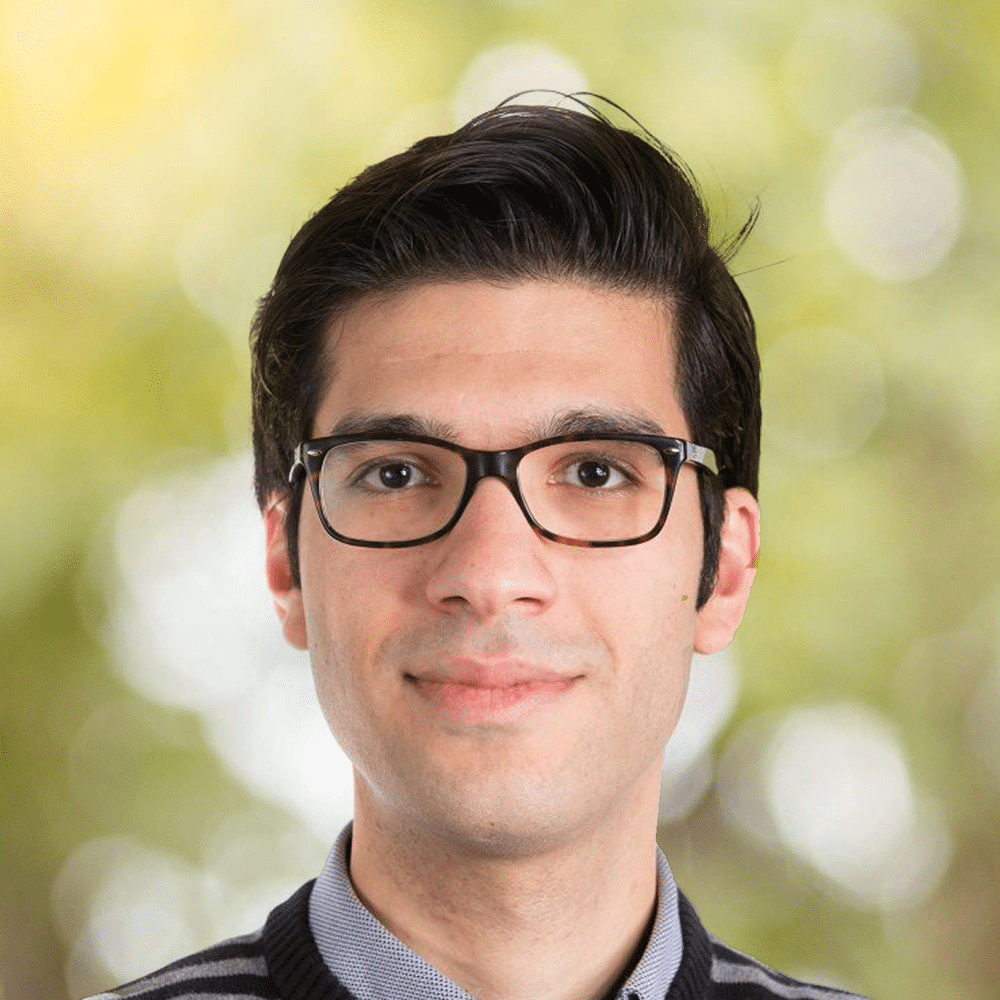
Efficient Deployment of Large Language Models on Edge Devices
by Babak Ehteshami Bejnordi | Research Scientist | Qualcomm AI Research
Show infoBiography:
Babak Ehteshami Bejnordi is a Research Scientist at Qualcomm AI Research in the Netherlands, leading a research group focusing on conditional computation for efficient deep learning. His primary research focus lies in the realm of efficient Deep Learning for Large Language Models (LLMs) and Computer Vision. His recent research works have been in the areas of Efficient Autoregressive decoding in LLMs, Mixture of Experts, Multi-Task Learning, and Continual Learning. Babak obtained his Ph.D. in machine learning for breast cancer diagnosis from Radboud University in the Netherlands. During his Ph.D., he organized the CAMELYON16 challenge on breast cancer metastases detection which demonstrated one of the first medical diagnostic tasks in which AI algorithms outperform expert pathologists. Before joining Qualcomm he was a visiting researcher at Harvard University, BeckLab, and a member of the Broad Institute of MIT and Harvard. He has been the organizer of the Qualcomm Innovation Fellowship Program in Europe since 2019.
Abstract:
Deploying large language models (LLMs) on edge devices has emerged as a compelling solution to achieve reduced costs, lower latency, enhanced privacy, and personalized user experiences. However, on-device deployment introduces unique challenges due to the resource constraints of edge devices, which differ significantly from high-throughput inference environments. Key obstacles include sequential token generation with batch size one and the inability of these devices to accommodate the massive size of LLMs within their limited DRAM. Additionally, directly loading model weights from flash storage can severely impact latency.
In this talk, we delve into the intricacies of on-device LLM inference during both prompt encoding and token generation stages. We then explore innovative approaches for developing efficient on-device language models. Specifically, we introduce a novel caching strategy that enables state-of-the-art Mixture of Expert models, that exceed the available DRAM on mobile devices, to be deployed effectively. Experimental results demonstrate up to 2X speedups on mobile hardware.
Furthermore, we present a hybrid methodology that combines language models of varying sizes to optimize autoregressive decoding while preserving high predictive performance. By conditioning a small language model (SLM) on representations generated by an LLM, we achieve substantial token generation speedups of up to 4X with minimal performance trade-offs (1–2% degradation) for tasks like translation and summarization.

How can explainable AI provide quality control for ML?
by Stefan Haufe | Head of the UNIML group & Professor | Technische Universität Berlin
Show infoBiography:
Stefan Haufe is a joint Associate Professor of Uncertainty, Inverse Modeling, and Machine Learning at Technische Universität Berlin and Physikalisch-Technische Bundesanstalt Berlin. He also serves as a Group Leader at Charité - Universitätsmedizin Berlin, where his research focuses on developing advanced computational methods. His group specializes in signal processing, inverse modeling, and machine learning techniques for analyzing neuroimaging and other medical data. This work aims to address challenges in understanding complex physiological processes and improving medical diagnostics and treatment strategies. Additionally, he has a keen interest in model interpretation and explainable artificial intelligence, striving to make machine learning applications more transparent and interpretable for practical use in medical and scientific contexts. Through collaborations with interdisciplinary teams, Stefan Haufe contributes to advancing both theoretical and applied aspects of computational neuroscience and biomedical data analysis.
Abstract:
There is a desire for humans to ""understand"" decisions of machine learning (ML) models. Explainable AI (XAI) seemingly addresses this need by providing information beyond a model's output. XAI methods have been proposed to help identifying and correcting failure modes in models and data, to facilitate scientific discovery by identifying ""important"" features, and to perform counterfactual reasoning.
However, rarely are XAI methods designed to fulfill any of such purposes, which raises questions about the generalizability of reported empirical findings and the conditions under which certain interpretations of XAI outputs (e.g., feature attribution maps) are really valid.
Here, we present theoretical analyses of minimal problem settings as well as empirical results on ground-truth benchmarks showing that feature attribution methods cannot in general distinguish between features associated with the predicted variable or not. We discuss how this can lead to incorrect conclusions about models and data, and to suboptimal downstream decisions such as the rejection of an optimal model.
We present preliminary efforts to formalize distinct ""explanation problems"", emphasizing that useful explanations typically require understanding not only of the model function but also the distribution and causal structure of the data it was trained on.
Finally, we outline novel approaches addressing specific explanation problems.

Biography:
Grigory is the CTO and co-founder of Intento, a company dedicated to advancing machine learning and artificial intelligence technologies. Before founding Intento, he gained extensive experience in both industry and academia, working at Yandex and the Higher School of Economics. With a career spanning over 25 years in software engineering, Grigory has dedicated nearly 20 years to data analysis, artificial intelligence, and machine learning, building expertise in these cutting-edge fields.
Since 2011, Grigory has been deeply involved in deep learning, contributing to the development and application of these transformative technologies. His work bridges theoretical advancements and practical implementations, making him a leader in the AI community. Grigory is also a Google Developer Expert in Machine Learning, a recognition of his deep technical knowledge and active contributions to the developer ecosystem.
Abstract:
With over 7,000 languages spoken globally, the field of Natural Language Processing (NLP) has historically been dominated by English, with some attention to other high-resource languages like Chinese, Spanish, and French. This focus has led to significant advancements in language technologies for these languages, but it has also resulted in a disparity in NLP resources and tools available for less-represented languages. This talk will explore the current state of multilinguality in Large Language Models (LLMs), examining the challenges and opportunities in expanding language coverage beyond the most popular and digitized languages. We will discuss the limitations of existing models in handling diverse linguistic structures and the efforts being made to create more inclusive language technologies. By highlighting recent research and developments, this presentation aims to shed light on the path toward truly multilingual AI systems that can serve a broader spectrum of the world's linguistic communities.
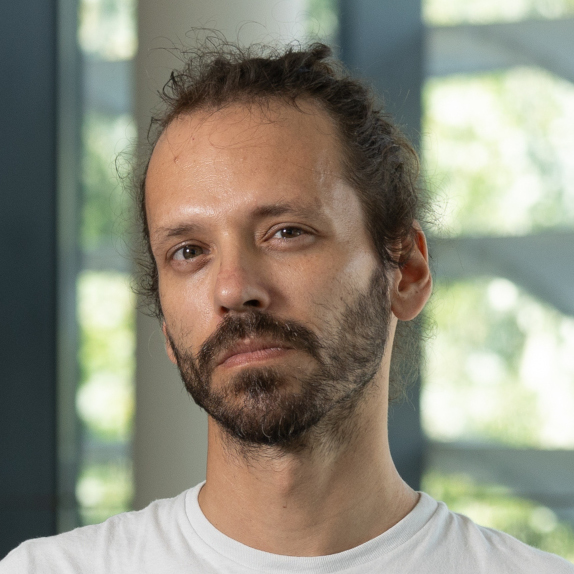
Optimal transport distances for Markov chains
by Gergely Neu | Professor | Pompeu Fabra University, Barcelona
Show infoBiography:
Gergely Neu is a research assistant professor at the Pompeu Fabra University, Barcelona, Spain. He has previously worked with the SequeL team of INRIA Lille, France and the RLAI group at the University of Alberta, Edmonton, Canada. He obtained his PhD degree in 2013 from the Budapest University of Technology and Economics, where his advisors were András György, Csaba Szepesvári and László Györfi. His main research interests are in machine learning theory, with a strong focus on sequential decision making problems. Dr. Neu was the recipient of a Google Faculty Research award in 2018, the Bosch Young AI Researcher Award in 2019, and an ERC Starting Grant in 2020.
Abstract:
How can one define similarity metrics between stochastic processes? Understanding this question can help us design better representations for dynamical systems, study distances between structured objects, formally verify complex programs, and so on. In the past, the dominant framework for studying this question has been that of bisimulation metrics, a concept coming from theoretical computer science. My recent work has been exploring an alternative perspective based on the theory of optimal transport, which has led to surprising results, including a proof of the fact that bisimulation metrics are, in fact, optimal transport distances. This realization allowed us to import tools from optimal transport and develop computationally efficient methods for computing distances between Markov chains via the reduction of the problem to a finite-dimensional linear program. In this talk, I will introduce this framework and the most recent algorithmic developments, as well as discuss the potential for representation learning in more detail.

Learning the Language of Life: AI in Genomics & Cell Biology
by Adam Kosiorek | Senior Research Scientist | Google Deepmind
Show infoBiography:
Adam R. Kosiorek is a Senior Research Scientist at Google DeepMind in London. His research interests include unsupervised representation learning, particularly learning object-centric representations from images and videos without supervision, and generative modelling. He is also interested in inference methods for probabilistic generative models. Previously, Adam interned at Google Brain in Toronto with Geoff Hinton, where he developed Stacked Capsule Autoencoders. He received his Ph.D. from the University of Oxford, MSc from the Technical University of Munich and BSc from the Warsaw University of Technology. In his free time, Adam likes reading books and training calisthenics.
Abstract:
Large‑language models can speed up paperwork and even suggest a diagnosis, yet they stop short when no test exists or no cure is known. Those breakthroughs lie deeper—in the tangled code of our genomes and in the shifting states of living cells. This talk traces the journey from messy biological measurements to the algorithms that turn them into insight and, ultimately, new therapies. We’ll unpack real case studies that show how ML advances translate to spotting disease‑causing DNA changes, predict how a drug will steer a cell’s fate, and even design new genetic “switches” from scratch. Along the way, you’ll see the key technical hurdles, the skills that matter most, and why progress here opens doors that language models alone cannot. You’ll leave with a clear map of the questions worth tackling and a realistic view of how AI in genomics and cell biology could reshape medicine in the next decade.
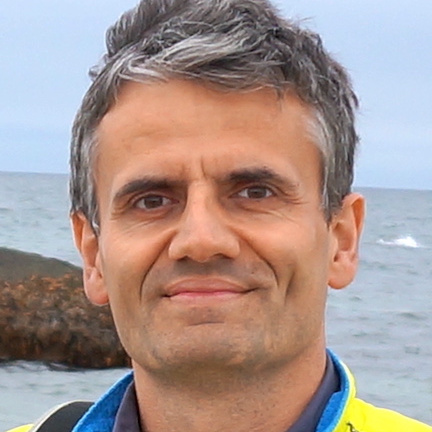
Neurosymbolic Autoencoders for Image Interpretation: From Physics-based ML to Program Synthesis
by Krzysztof Krawiec | Full Professor | Poznan University of Technology
Show infoBiography:
Krzysztof Krawiec is a Professor of Computer Science at the Poznan University of Technology in Poland, where he currently serves as the head of the Neurosymbolic Systems Group. His primary research areas include program synthesis, neurosymbolic systems, evolutionary computation, and medical imaging. He has authored over 180 publications on these topics and has received the Fulbright Senior Advanced Research Award, two ACM SIGEVO Impact Awards, and was a visiting professor at the University of California and Massachusetts Institute of Technology. He also served as the general chair of GECCO’21, the largest scientific event in the field of evolutionary computation and as an advisor at the Confederation of Laboratories for Artificial Intelligence in Europe. Krzysztof is also a co-founder of the Center for Artificial Intelligence and Machine learning, part of the Horizon 2020 Foundations of Trustworthy AI project, and an associate editor of Genetic Programming and Evolvable Machines and ACM Transactions on Evolutionary Learning and Optimization. In addition to his academic contributions, Professor Krawiec serves as the Chief AI Officer at Optopol Technology and CTO of Hylomorph Solutions Ltd.
Abstract:
In order to make reliable predictions and robust inferences, image interpretation models need to achieve as complete an understanding of scene content as possible. This goal cannot be achieved in supervised learning, which focuses on narrow, task-specific goals. In this talk, I will argue for neurosymbolic autoencoders, a class of unsupervised architectures that enable holistic scene modeling by forcing the formation of transparent latent representations expressed in tangible terms of objects, their appearance, and their spatial arrangement. I will also illustrate how the learned representations can help solve downstream tasks in medical imaging and remote sensing.

Evaluating LLM-generated text at scale
by Patrícia Schmidtová | PhD student | Charles University
Show infoBiography:
Patricia Schmidtova is a Ph.D. student in Natural Language Processing (NLP) at Charles University, focusing on semantic accuracy in natural language generation and its evaluation methodologies. Her work has earned her Best Paper Awards at EACL and INLG. With seven years of industry experience, she has specialized in implementing NLP components for task automation in the banking sector. In her talk, Patricia will share her experience designing an automatic evaluation protocol to assess the reliability of millions of summaries generated by large language models (LLMs).
Abstract:
Large language models (LLMs) allow us to invent new ways of transforming data and text. In many cases, they can do it without a larger collection of training data – a couple of examples are often all that is required. However, this normally means there is also no curated evaluation dataset available. So what can we do to understand and track the quality of the generated texts?Benchmarks are popular on social networks, but they rarely simulate specific real-world applications. Metrics that are most frequently used in research require a larger set of human-written reference solutions that are frequently not available and cost a substantial amount to collect and curate. In my talk, I will share my experience with evaluating LLM-generated summaries of hotel descriptions. By documenting my journey with this task, I aspire to give you a recipe for building an evaluation pipeline that covers your needs. Spoiler alert, there is unfortunately no silver bullet.

LLMs for Machine Translation are here - but not quite yet
by Roman Grebennikov | Principal Engineer | Delivery Hero
Show infoBiography:
A principal ML engineer and an ex startup CTO working on modern search and recommendations problems. A pragmatic fan of open-source software, functional programming, LLMs and performance engineering.
Abstract:
- How are traditional machine translation models trained and evaluated? A look at Google Translate, NLLB, and the evolution from n-gram to neural-based evaluation metrics.
- Wait, is seq2seq dead in 2025? How well do open-source LLMs like Llama and Qwen perform out of the box on MT tasks? And what about GPT-4o?
- Sure, modern LLMs aren’t trained specifically for MT -- but what if we try? Enter X-ALMA and friends. Big and noisy vs. small and clean datasets for MT fine-tuning, and the curse of multilinguality.
- A few DIY experiments with Gemma 2/3 fine-tuning -- and how we accidentally beat NLLB after just 10 minutes of training.

Can Compressing Foundation Models Be as Easy as Image Compression?
by Martin Genzel | Applied Machine Learning Researcher | Merantix Momentum
Show infoBiography:
Martin Genzel is a Staff Machine Learning Researcher at Merantix Momentum, developing deep learning solutions for tabular and time-series data in real-world applications. As an applied mathematician by training, he got his Ph.D. from TU Berlin working on compressed sensing and high-dimensional signal processing. In his postdocs at Utrecht University and the Helmholtz Centre Berlin, he explored deep learning techniques for ill-posed inverse problems and computational imaging.
Abstract:
The widespread adoption of Foundation Models, especially LLMs, is often hindered by their substantial size and computational demands, especially in resource-limited settings. While post-training compression offers a promising avenue to mitigate these challenges, the process can feel like a ""black box"" for the user, requiring significant expertise and trial-and-error to find the right balance between model size and performance.
This talk introduces Any Compression via Iterative Pruning (ACIP), a novel algorithmic approach designed with the user in mind. ACIP allows for intuitive and direct control over the compression-performance trade-off, akin to compressing an image. It leverages a single gradient descent run of iterative pruning to establish a global parameter ranking, from which models of any target size can be immediately materialized.
ACIP demonstrates strong predictive performance on downstream tasks without costly fine-tuning. Across various open-weight LLMs, it achieves state-of-the-art compression results compared to existing factorization-based methods. Moreover, it seamlessly complements common quantization techniques for even greater compression.
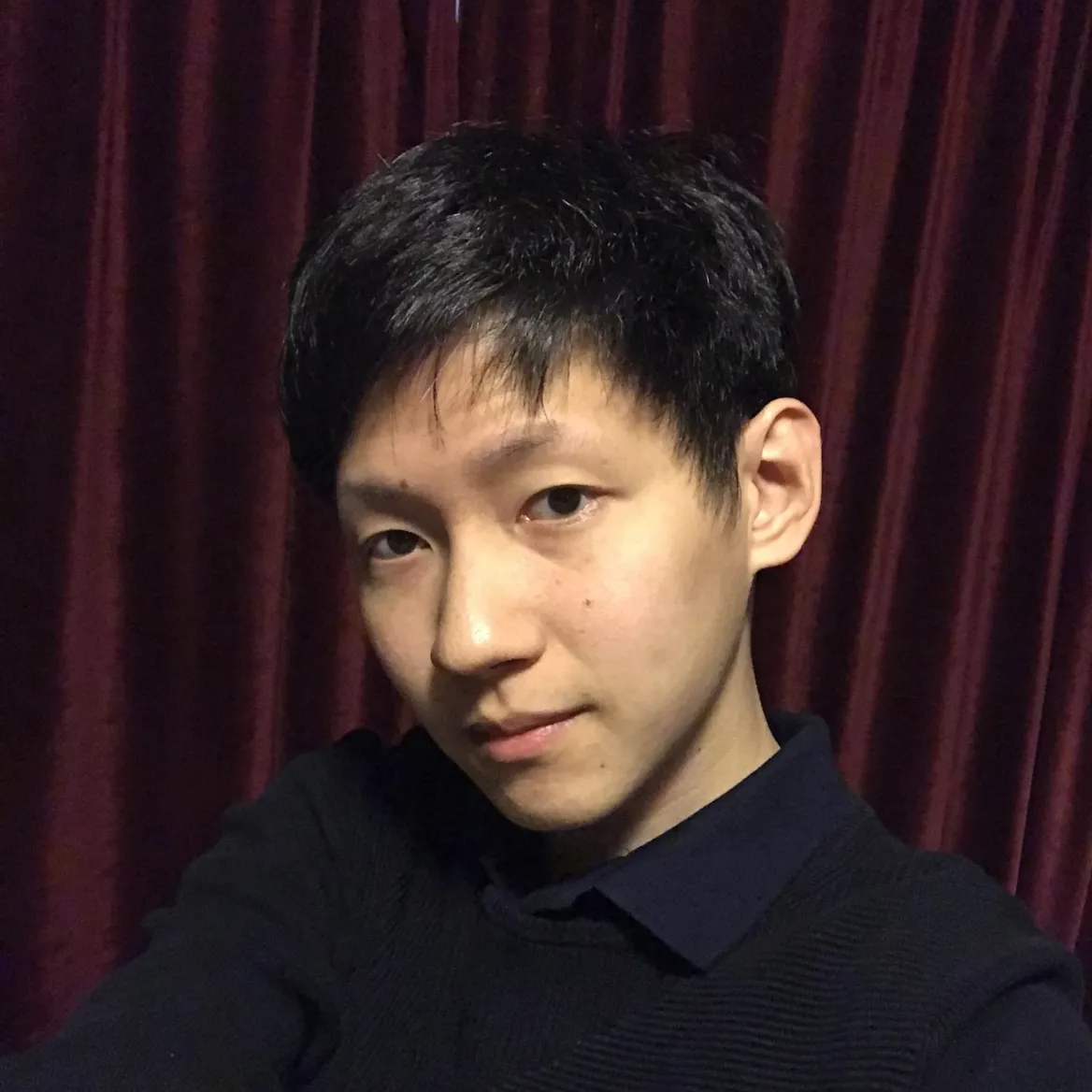

Advancing Ray Tracing with Neural Networks: Neural Intersection Function
by Chih-Chen Kao | Member of Technical Staff | AMD
Show infoBiography:
Chih-Chen Kao is a member of the technical staff and a software engineer at AMD in Munich, Germany. Prior to joining AMD, he worked on simulation and perception systems for autonomous driving research. He earned his Ph.D. in Computer Science from National Taiwan University, Taipei, Taiwan, in 2017. His research interests span real-time ray tracing, physically-based rendering, heterogeneous computing, and the application of deep learning in computer graphics. In 2011, Dr. Kao was invited to participate in the OPTIMI (Online Predictive Tools for Intervention in Mental Illness) program, a research initiative funded by the European Union’s 7th Framework Programme for Personal Health Systems, hosted at ETH Zurich in Switzerland.
Abstract:
Bounding Volume Hierarchies (BVHs) are widely used to accelerate ray-object intersection queries in Monte Carlo ray tracing, particularly for evaluating visibility. However, traditional BVH traversal exhibits highly irregular memory access patterns and branch divergence, limiting its efficiency on massively parallel GPUs. Recent advances in neural representations suggest an opportunity to replace or augment BVH structures to address these inefficiencies. In this work, we propose a unified framework that integrates a Neural Intersection Function into a conventional BVH-based ray tracing pipeline. Our approach utilizes a multilayer perceptron (MLP) with dense matrix multiplications and predictable memory access patterns, allowing us to bypass the most irregular and time-consuming parts of BVH traversal during secondary ray queries. Furthermore, we introduce Locally-Subdivided Neural Intersection Functions (LSNIFs), a refined method that replaces bottom-level BVHs with neural networks trained to predict visibility, hit-point locations, and material indices directly. Key innovations include a sparse hash grid encoding scheme combined with geometry voxelization, a scene-agnostic training data collection pipeline, and a custom loss function to ensure high fidelity in hit-point prediction. LSNIFs are trained offline per object, enabling flexible and efficient support for arbitrary ray types and viewpoints at inference time. By leveraging neural approximations to replace or enhance critical components of the rendering pipeline, our work paves the way toward more efficient, neural-augmented ray tracing systems.


From Regret to Retry: Training LLMs for Self-correcting SQL Generation
by Riccardo Belluzzo | Research Engineer | Allegro
Show infoBiography:
Riccardo is a Senior Research Engineer at Allegro, working in the Language Intelligence division. Over the past few years, he's been involved in a wide range of projects, from training multilingual language models to developing representation learning for e-commerce. He's also recently led several successful projects, bringing LLM-based solutions into production by applying the latest NLP breakthroughs. Riccardo is also a dedicated member of the local ML community, sharing his expertise at meetups and conferences. When he's not researching, he enjoys playing electric guitar, cooking delicious Italian meals, and exploring the world
Abstract:
Recent developments in the field of "reasoning LLMs" have demonstrated that language models trained to follow chain-of-thoughts (CoT) excel at solving problems requiring logical thinking, like math or symbolical reasoning. A critical question arises: can an LLM recognize when its chain of thoughts contains a logical error? In this talk, I will explore this fascinating topic, showcasing recent discoveries in LLM theory through a practical use case: training an open-source coding LLM to solve the text-to-SQL task, which involves translating natural language questions into SQL queries. Throughout the talk, we will discover that LLMs not only exhibit patterns of regret when generating erroneous SQL reasoning steps, but can also be trained to recognize and self-correct those errors
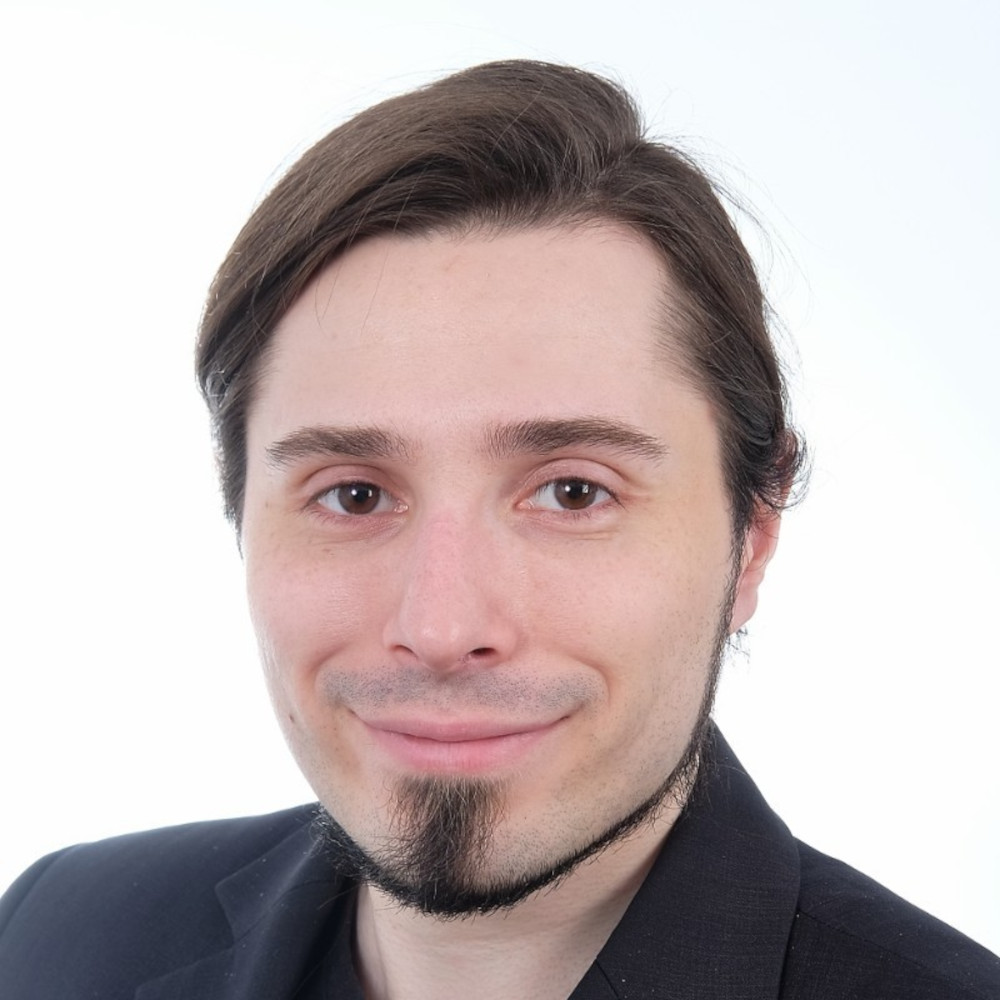

From Labs and PoCs to Production: Hard‑Earned Lessons from 20+ Real‑World AI Projects
by Michał Mikołajczak | Lead Solutions Architect & CEO | datarabbit.ai
Show infoBiography:
Michal Mikolajczak is the founder and lead solutions architect at datarabbit.ai, a custom data/AI/cloud solutions provider
that helps organizations leverage their data and gain a competitive advantage by designing, building, and delivering
artificial intelligence and data-driven solutions for their businesses. Due to his work on various projects in different
industries, he has a wide range of diverse ML experience, with an emphasis on its productization. He has particular
expertise in the medical industry - having worked in medical imaging for several years, including as CTO of a startup that
was successfully acquired (80 million USD transaction value) by a NASDAQ-listed company. Privately, a big fan of BI /
visualization systems of all kinds that enable storytelling with data and Pratchett's work.
Abstract:
There are many ideas for AI projects that make it and make a significant impact on business. There are many more, that seem great, but ultimately won’t. Most of them, in fact. Why do so many promising ideas and pilots never make it to production? In this session, based on distilled knowledge from over 20 real-world projects (of various sizes and for various industries), we’ll unpack some universal patterns behind why AI and data science projects stall, and what it takes to get them over the finish line. Through actual use cases and stories – some triumphant, others cautionary – we’ll explore the key reasons AI initiatives fail to scale: misaligned expectations and business goals, processes and communication problems, data and infrastructure pitfalls, tech issues themselves. Then, we’ll shift focus to practical strategies that work: aligning with business goals, starting small and iterating fast, building reliable MLOps foundations, and planning for real-world usage from day one. Whether you're a hands-on data scientist or a business leader navigating AI strategy, you'll leave with actionable insights and a fresh perspective on how to turn your next PoC into a production-grade success. If you’re serious about delivering real value with AI, this is the talk you don’t want to miss.


LLMs in Education: Smart Lesson Generator case study
by Grzegorz Bilewski | Software Engineering Manager | Pearson
Show infoBiography:
Grzegorz is an experienced Software Engineering Manager with over a decade of expertise in building and leading cross-
functional teams, driving digital product development, and scaling technical organisations. At Pearson, he oversees a
portfolio of global EdTech products, combining strategic leadership with hands-on technical direction.
Currently, Grzegorz leads the development of Smart Lesson Generator—an AI-powered teaching assistant designed to
revolutionise language instruction. Built on AWS and integrated with large language models, the tool generates curriculum-
aligned, level-appropriate classroom activities in seconds. It supports both Pearson and third-party content, ensuring
flexibility for educators while aligning every activity with the Global Scale of English (GSE) for measurable learning
outcomes. This initiative is a cornerstone of Pearson’s broader AI strategy, focused on personalised education at scale,
and already serves thousands of teachers worldwide.
Abstract:
In this presentation, we will explore how Large Language Models (LLMs) are transforming education through the Smart Lesson Generator (SLG) case study. We will discuss how Pearson uses courseware data and the Global Scale of English within LLMs to create personalized learning experiences. Additionally, we will highlight new services driven by business needs and examine the challenges faced during SLG's development and implementation, and how we overcame them to ensure its effectiveness and reliability.
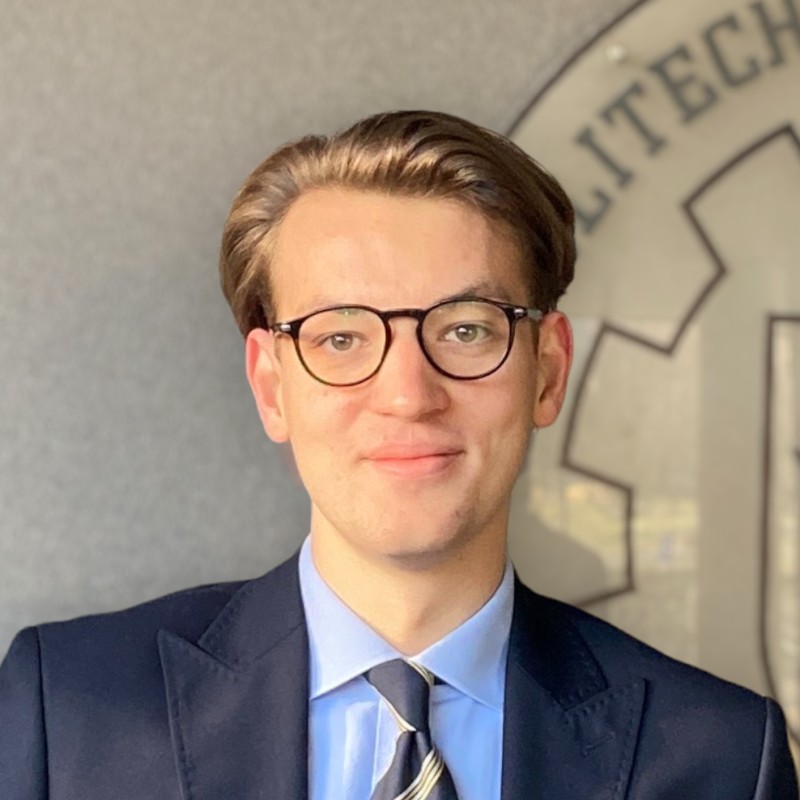

Tales of moderation. How ML helps us detect fraud at OLX
by Jędrzej Kopiszka | Junior Data Scientist | OLX
Show infoBiography:
Jędrzej works as a Junior Data Scientist at OLX in the Moderation team, focusing on fraud detection through data science.
He holds a Bachelor's degree in Artificial Intelligence from Poznań University of Technology and is currently pursuing a
Master's in Artificial Intelligence at Johannes Kepler University in Linz, Austria. A former GHOST member and past GHOST
Day coordinator, Jędrzej is a true believer in the mission of this conference's organizers. In his free time, he is an avid
climber, cyclist, skier, and an enthusiast of urbanism.
Abstract:
This talk will guide you through the moderation process at OLX – Poland's largest classifieds platform... and an app known to all of you! Specifically, I will focus on fraud detection in OLX chat, whether it involves images or text. I will showcase how our solutions have evolved over the past few years, the techniques we use, what we are working on, and why tackling fraud often feels like a cat-and-mouse game with fraudsters. Additionally, I will discuss the use of classic machine learning, our latest advancements in online learning, and content classification powered by our in-house generative AI platform.

Explainable AI: Moving from Numbers to Meaningful Insights
by Jacek Karolczak | PhD student | PUT
Show infoBiography:
Jacek Karolczak is a Ph.D. student at Poznan University of Technology. His research focuses on improving the interpretability of machine learning models, particularly in dynamic environments where data continuously evolves. He believes the world of explainable AI (xAI) is shifting beyond feature-importance explanations, embracing high-level concept-based interpretations that better align with the language and reasoning of end users.
Abstract:
The increasing complexity of machine learning models has heightened the demand for their explainability. While most presentations at conferences like GHOST Day focus on feature importance, particularly Shapley values, these explanations are often criticized as incomprehensible, even to machine learning experts. In contrast, the XAI 2.0 manifesto advocates for concept-based explanations, such as ia prototypes - representative instances. Besides introducing the problem, the author will explore existing approaches and discuss recent contributions to concept-based explainability, including their own work on prototype-based concept drift detection, which ensures the approach's intrinsic interpretability. Additionally, the potential of prototypes to improve professional ML applications will be discussed.

Machine learning in video processing
by Paweł Ekk-Cierniakowski, Kajetan Wencierski | Senior Manager AI & ML, Data Scientist | SoftwareOne
Show infoBiography:
For over 10 years Paweł has been professionally involved in data analytics as a data scientist, team leader and project manager. He has participated in many projects in the area of advanced data analytics, such as monitoring production lines, opinion analysis, fraud detection and price forecasting. His main experience and interests are in the pharmaceutical and healthcare industries, but he has been involved in projects in various areas such as finance, media, energy and agriculture. Currently, he is responsible for designing and implementing data solutions, mainly in the field of machine learning and artificial intelligence. He shares his knowledge as a data science trainer, lecturer and speaker at conferences. Co-author of scientific papers, mainly in the field of medicine and statistics, published e.g. in journals from the Master Journal List.
Kajetan Wencierski works as a Data Scientist at SoftwareOne, holding a Master's degree in Computer Science from Poznan University of Technology. While studying there, he was also a member of GHOST. He is deeply passionate about the diverse applications of artificial intelligence, with a particular focus on the intersection of machine learning and audio. Kajetan especially enjoys pushing the boundaries of what is achievable by applying state-of-the-art AI models to solve real-world, everyday problems, finding the process deeply rewarding.
Abstract:
During our lecture, we will delve into the comprehensive 2-year journey of our project for the media house, which began with the transcription of videos and the detection of background sounds. This initiative aims to enhance content accessibility for individuals with disabilities. Our presentation will cover the entire process, from the initial Proof-of-Concept stage, through the development of a Minimum Viable Product (MVP), and finally to the deployment in a production environment.
We will discuss various strategies to improve the quality of transcriptions and increase the accuracy of background sound detection. Additionally, we will highlight the integration of advanced features based on Azure services. These features include the creation of concise video summaries, automatic translations, and dubbing. Our goal is to showcase how these enhancements contribute to making content more accessible and user-friendly.

Rethinking Visual Counterfactual Explanations Through Region Constraint
by Bartłomiej Sobieski | AI Researcher | University of Warsaw, MI2.ai
Show infoBiography:
He is a PhD student in Computer Science at the University of Warsaw, focusing on the development of novel algorithms that combine generative modeling with explainability in computer vision. His primary research interests involve exploring complex mathematical fields, such as the theory of differential equations and differential geometry, which serve as inspiration for innovative research ideas.
His academic record includes publications in venues such as the International Conference on Artificial Intelligence in Medicine, Artificial Intelligence in Medicine, International Conference on Agents and Artificial Intelligence, Computer Vision and Pattern Recognition Conference Workshops, and the European Conference on Computer Vision.
Abstract:
Visual counterfactual explanations (VCEs) have recently gained immense popularity as a tool for clarifying the decision-making process of image classifiers. This trend is largely motivated by what these explanations promise to deliver -- indicate semantically meaningful factors that change the classifier's decision. However, we argue that current state-of-the-art approaches lack a crucial component -- the region constraint -- whose absence prevents from drawing explicit conclusions, and may even lead to faulty reasoning due to phenomenons like confirmation bias. To address the issue of previous methods, which modify images in a very entangled and widely dispersed manner, we propose region-constrained VCEs (RVCEs), which assume that only a predefined image region can be modified to influence the model's prediction. To effectively sample from this subclass of VCEs, we propose Region-Constrained Counterfactual Schrödinger Bridges (RCSB), an adaptation of Schrödinger Bridges to the problem of conditional inpainting, where the conditioning signal originates from the classifier of interest. In addition to setting a new state-of-the-art by a large margin, we extend RCSB to allow for exact counterfactual reasoning, where the predefined region contains only the factor of interest, and incorporating the user to actively interact with the RVCE by predefining the regions manually.
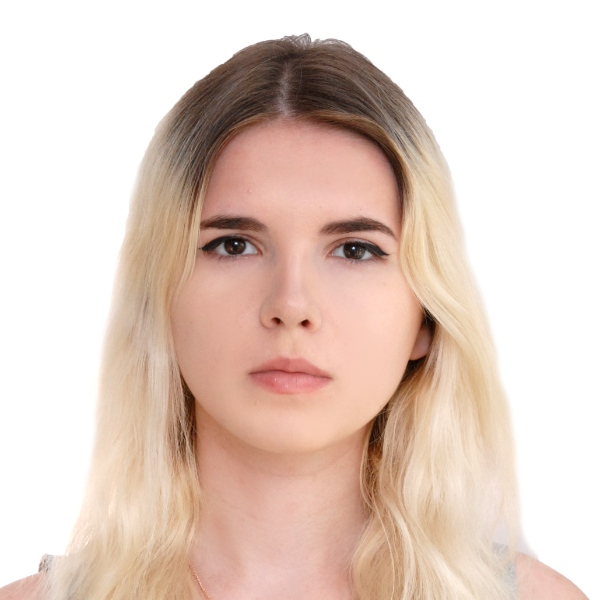
Automatic diagnosis of systemic and ophthalmic diseases using deep learning techniques in analyzing fundus images
by Anastasiia Ponkratova | Student | Polish-Japanese Academy of Information Technology
Show infoBiography:
Anastasiia Ponkratova is a recent graduate with a Bachelor's degree in Computer Science, possessing a strong foundation in programming, data analysis, and artificial intelligence. Passionate about machine and deep learning, Anastasiia is focused on applying AI in medicine, including image analysis, natural language processing, and predictive modeling. She actively expands her knowledge through online courses, conferences, and participation in open-source projects. She is particularly interested in how AI can enhance diagnostics, personalize treatment, and improve the quality of healthcare. Anastasia already has experience collaborating with professionals and medical research institutions and aims to further develop these collaborations to contribute to innovations at the intersection of technology and healthcare.
Abstract:
I invite you to join me in exploring the cutting-edge applications of deep learning in medical diagnostics! The presentation will delve into the innovative use of the RETFound model, a state-of-the-art AI framework, for the automated diagnosis of systemic and ophthalmological diseases through color retinal image analysis. Using a unique private dataset of retinal images provided by a leading medical university, we demonstrate how this interdisciplinary approach enhances the accuracy of detecting conditions like hypertension, diabetes, glaucoma, and diabetic retinopathy. Discover the model’s implementation, its adaptation for real-world clinical use, and the promising results achieved. Whether you are a researcher, clinician, or AI enthusiast, this talk will provide valuable insights into the future of AI-driven medical diagnostics and its potential to revolutionize healthcare. Don’t miss this opportunity to learn about groundbreaking advancements that could transform patient care! 🙂
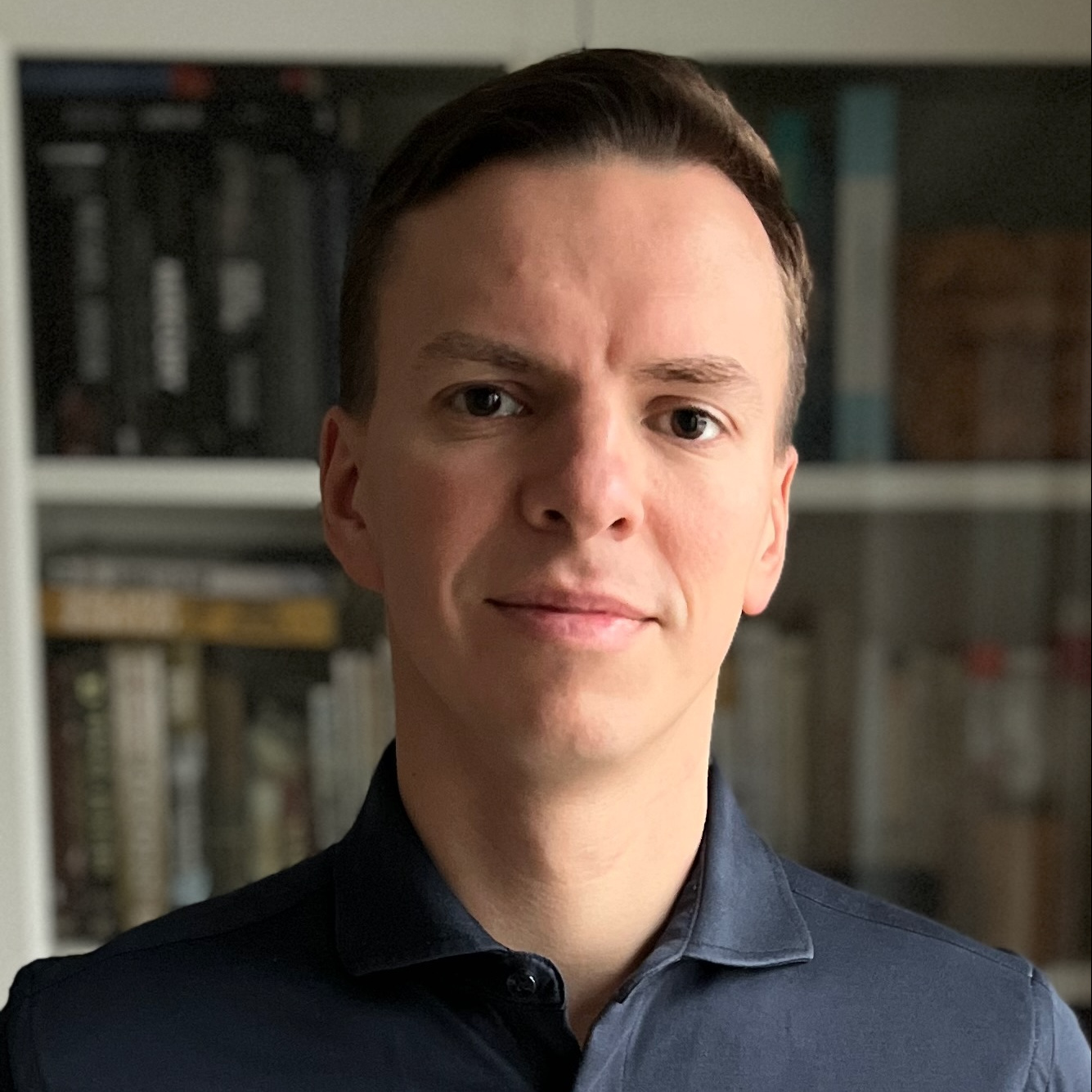
Retail Intelligence: From Noisy Receipts to Accurate Purchase Predictions
by Maciej Piernik | Assistant Professor | Poznan University of Technology
Show infoBiography:
Dr. Maciej Piernik is a computer scientist specializing in artificial intelligence applications in healthcare. With a PhD in Computer Science from Poznan University of Technology, he combines academic research as an Assistant Professor with practical industry experience. His expertise lies in machine learning algorithms for complex data processing, particularly in biomedical applications. As a data scientist and consultant, Dr. Piernik collaborates with various businesses to build and deploy AI/analytical models, as well as medical professionals researching chronic diseases including multiple sclerosis, systemic lupus erythematosus, and inflammatory bowel diseases. With over 20 scientific publications to his credit, Dr. Piernik's research interests span artificial intelligence, cellular and molecular biology, and consciousness. He has developed several open-source tools for medical data analysis, including tools for gene expression data processing in IBD patients.
Abstract:
This talk presents a unified approach addressing two critical challenges in retail analytics: product categorization from noisy receipt data and next-basket recommendation. We demonstrate how improved product labeling directly enhances recommendation accuracy in real-world retail environments. Our system processes OCR-extracted receipt data through a robust classification pipeline that achieves 80% mean accuracy despite inconsistent training labels, outperforming traditional rule-based methods. We compare LLM-based categorization against more efficient embedding-based neural networks, finding that lightweight models can match performance while enabling local deployment. Building on these enhanced product labels, our recommendation system achieves a 90% AUC for predicting future purchases, significantly outperforming recency and frequency baselines. We'll discuss our methodology for handling hierarchical categories, capturing seasonality patterns, and maintaining scalability. This work provides practical insights for implementing end-to-end retail intelligence systems that operate under real-world constraints while delivering meaningful improvements in recommendation quality.

The Backbone of AI: How Data Engineering Powers Machine Learning
by Pavlo Melnyk | Data Engineer | Skandinaviska Enskilda Banken (SEB)
Show infoBiography:
Pavlo is an experienced Data Engineer with over 5 years of experience building scalable data solutions on AWS and Google Cloud Platform (GCP). With a strong passion for big data and data pipelining, he specializes in leveraging Python and Scala to design and optimize data workflows. Pavlo spent almost 2 years working within one of the largest Scandinavian banks, where he contributed to cutting-edge data infrastructure projects.
A graduate of the Big Data analysis major at Warsaw School of Economics and of the applied mathematics at University of Warsaw, Pavlo combines technical expertise with a deep understanding of business and analytics. Outside of work, he is an avid learner with interests in Spanish and Mandarin, a passionate photographer, and an enthusiastic mountain hiker. He also enjoys exploring philosophy and applied neuroscience, blending his technical and creative sides to drive innovation in data engineering.
Abstract:
In the world of machine learning and artificial intelligence, models are only as good as the data they are built on. While much attention is given to algorithms, model tuning and searching of the hyperparameters golden mean, the critical role of data engineering is often overlooked. This talk will dive deep into how data engineering forms the backbone of successful ML systems, enabling scalable, reliable, and efficient pipelines that transform raw data into actionable insights.
As a result of this talk, attendees will understand why data engineering is not just a supporting function but a critical enabler of machine learning success. Whether you're a data scientist, ML engineer, or data engineer, this session will provide actionable insights into building robust data systems that drive impactful ML solutions.

Geometric deep learning for blood flow modelling in cardiovascular diseases
by Patryk Rygiel | PhD candidate | University of Twente
Show infoBiography:
Patryk is a PhD candidate in the EU Horizon VASCUL-AID project at the University of Twente and a guest researcher at Amsterdam UMC. He is a former AI research scientist at med-tech company Hemolens Diagnostics and the best MSc graduate in AI at the Wrocław University of Science and Technology. His current research focuses on applications of geometric deep learning and implicit neural representations in medical imaging and blood flow modelling in the assessment of cardiovascular diseases. He is a co-author of international patents, a winner of the ICML Topological Deep Learning Challenge 2024 and a recipient of the MICCAI 2023 STAR Award. Next to his work, he is actively involved in AI community by being a member of the ML in PL association and a general chair of the Medical Imaging Symposium for PhDs and Postdocs (MISP^2) 2025.
Abstract:
Computational fluid dynamics (CFD) is a commonly used method of in-silico blood flow modelling in the assessment of cardiovascular diseases (CVDs). CFD, a numerical approach to solving the Navier-Stokes equations that govern fluid dynamics, can provide hemodynamic markers that have been found to correlate with the development and progression of various CVDs. However accurate, the CFD simulations are known to be very computationally demanding in terms of both time and resources required. To remedy that, in recent years, geometric deep learning methods, operating directly on 3D shapes, have been proposed as compelling surrogates of CFD, providing accurate estimates in just a few seconds.
In this talk, we will show how utilizing geometric algebra transformers allows for the creation of accurate, generalizable and rapid CFD surrogates. We will showcase how their performance can be further enhanced by being coupled with physics-informed neural networks as well as deep vectorized operators, that can effectively map between function spaces. Additionally, we will cover the problem of training data acquisition in the real-life scenarios by delving into active learning methods that allow for creating data-efficient and robust surrogates.
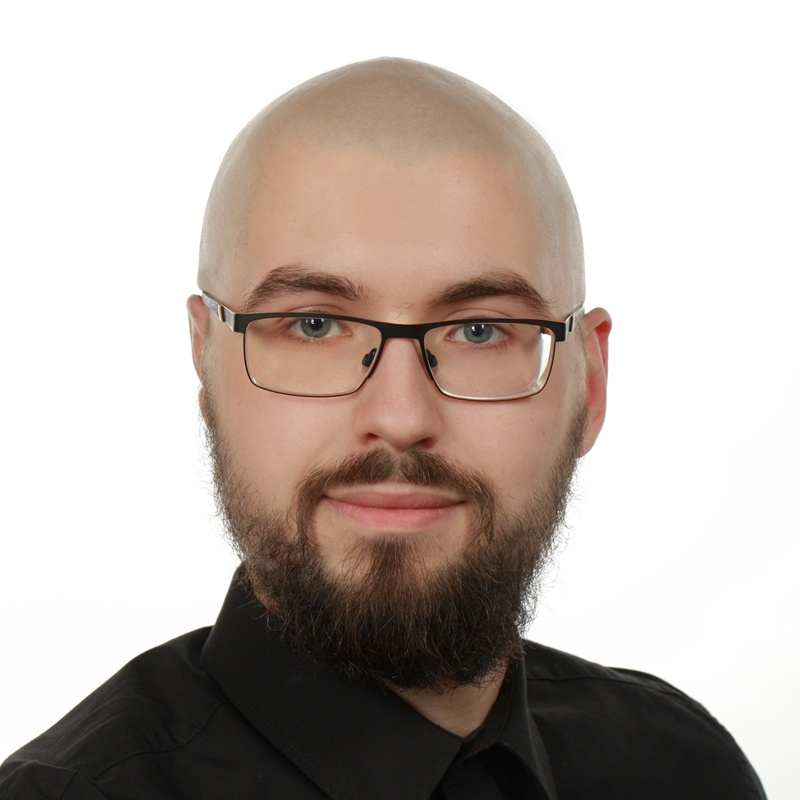
ML in agrochemistry and bee pesticide toxicity prediction
by Jakub Adamczyk | PhD candidate | AGH, Data Science Engineer | Placewise
Show infoBiography:
He is a PhD candidate in Computer Science at AGH University of Krakow and a member of the Graph ML and Chemoinformatics Group at the Faculty of Computer Science. His research focuses on fair evaluation, graph representation learning, graph classification, chemoinformatics, and molecular property prediction. He is also interested in time series, natural language processing (NLP), and MLOps, and teaches these subjects at AGH.
He works at Placewise as a Data Science Engineer, where he addresses various machine learning challenges in tabular data, computer vision, and NLP, along with their end-to-end MLOps implementations.
Outside of his professional work, he trains in Historical European Martial Arts (HEMA), specializing in messer and longsword, and enjoys reading and tabletop role-playing games.
Abstract:
ML is widely applied in medicinal chemistry and pharmaceutical industry. Chemoinformatics and molecular ML have been used for decades for safer, faster drug design. However, the important area of agrochemistry has been relatively neglected. It has incredible potential with both predictive and generative models, e.g. to predict pesticide toxicity, or generate new, safer agrochemicals. New regulations and focus on ecological agriculture necessitate the need for fast development of alternative pesticides, and ML can help.
In this talk, I will describe how and why we can apply ML in agrochemistry. In particular, I will present ApisTox, a novel dataset about pesticide bee toxicity, how we can construct such dataset from publicly available data sources, and what challenges we meet. Lastly, results for predictive models will be presented, including e.g. molecular fingerprints, graph kernels, and GNNs. We will also discuss potential future work in this interesting area.
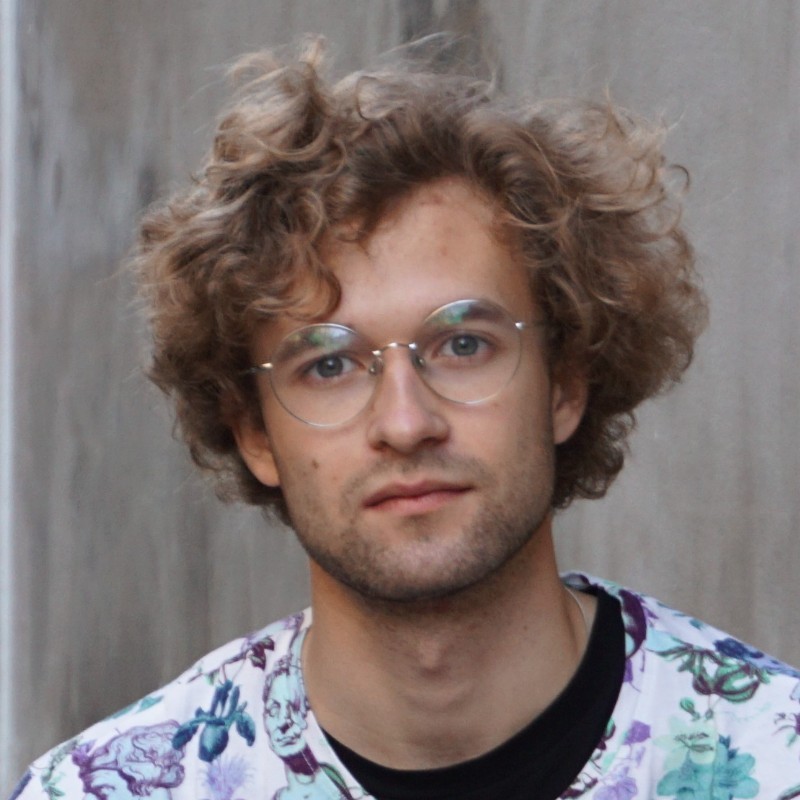
Surpassing GNNs and Transformers with Simple Feature Extraction for Peptide Function Prediction
by Piotr Ludynia | Researcher | AGH University of Krakow
Show infoBiography:
Piotr is a master's student in Machine Learning and Data Science at AGH University of Kraków and a member of AGH ML and Chemoinformatics Group. He is one of the main maintainers of scikit-fingerprints, a molecular fingerprint Python library for efficient molecular vectorization. In addition to his academic work, he is currently employed at Intel Technology Poland, working on deep learning research and neural network optimization.
Abstract:
Peptides, small proteins, are gaining attention for their therapeutic potential in combating cancer, viruses, and antibiotic-resistant bacteria.
Antimicrobial peptides, in particular, offer a promising alternative to traditional antibiotics in addressing the growing resistance crisis.
Accurately predicting peptide properties is crucial for drug discovery, and recent research has focused on deep learning approaches like graph neural networks and protein language models.
However, it turns out that a much simpler graph feature extraction can achieve even better results with a fraction of the computational cost.
We show that molecular fingerprints - domain specific molecular graph vectorization algorithms - combined with tree-based ensemble models, achieve state-of-the-art performance on multiple benchmarks and datasets.
This method is not only more accurate but also much faster and scalable, opening new possibilities for graph machine learning in chemoinformatics and peptide-based drug design.
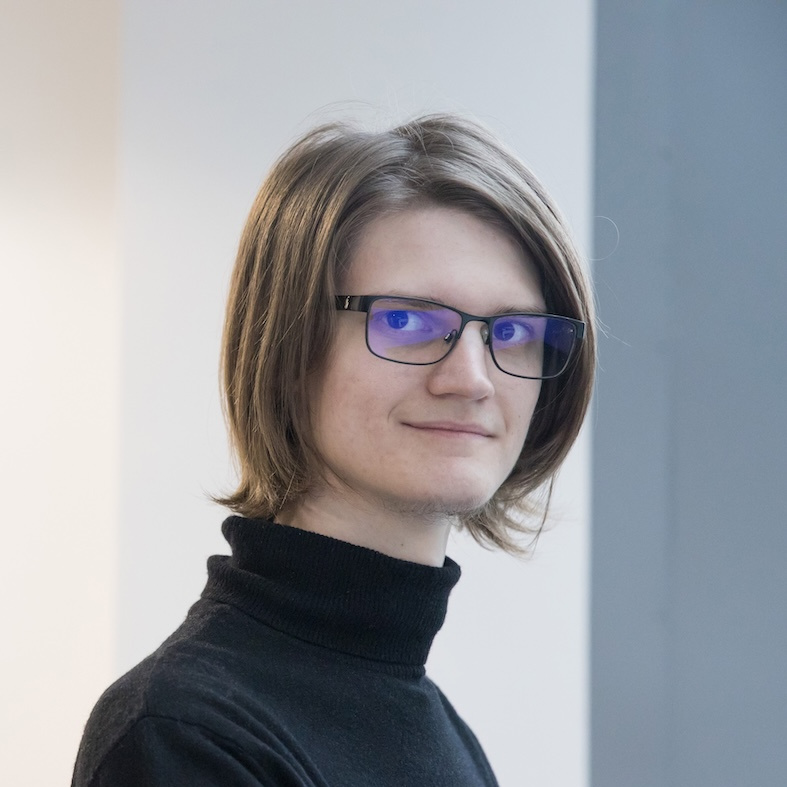

SageML: Accelerating Auto-ML through neural network-driven model selection
by Dawid Siera | Student | Poznan University of Technology
Show infoBiography:
He is a student at Poznań University of Technology, currently in the 6th semester of a bachelor's degree in Artificial Intelligence. He is the leader of Ghost’s Quantum Computing group and is also interested in Explainable AI (XAI) and Automated Machine Learning (AutoML).
He is currently working at PSNC as a quantum software developer, focusing on the development of quantum machine learning and quantum optimization software in Python. Beyond his academic and professional activities, he has initiated and organized several open-source projects, such as Torchboard and Decorify, which have been successfully published on PyPI.
He is passionate about developing innovative AI tools, pushing the boundaries of quantum computing, and making machine learning more transparent and accessible.
Abstract:
The selection of optimal machine learning models for specific datasets is a critical yet time-consuming task in the development of data-driven applications. Traditional AutoML systems automate this process, but often require extensive computational resources and time to explore a vast search space of potential models. We introduce SageML, a Python-based framework designed to accelerate the model selection process by leveraging combined topological dataset analysis and pre-trained neural networks. SageML predicts the performance of various machine learning algorithms, selecting the best candidate for a given dataset. By utilizing a pre-trained neural network to estimate model accuracies, SageML significantly reduces the search time while maintaining high predictive performance. The preliminary results show promising reductions in computational cost compared to traditional AutoML approaches, allowing users with limited domain knowledge or computational resources to achieve high-quality models efficiently.
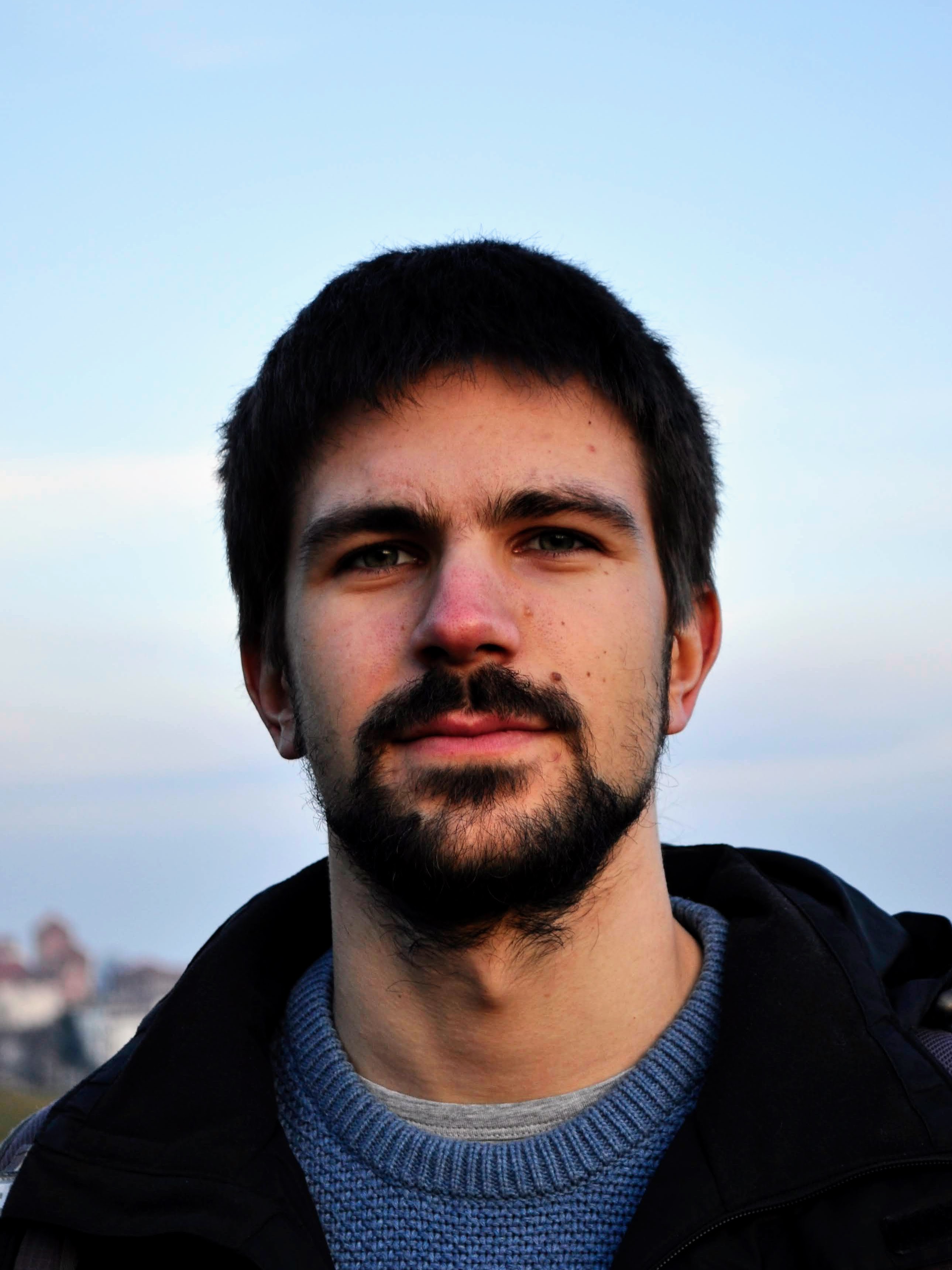

Molecular property prediction with Graph-of-Graphs approach
by Michał Stefanik | Student | AGH University of Krakow
Show infoBiography:
Michał is a Computer Science student at AGH University of Krakow. His current interests cover applying machine learning techniques to data of biological origin. Software engineer by profession.
Abstract:
Accurately predicting the properties of chemical molecules remains a critical challenge in computational chemistry and drug discovery. These properties encompass a wide range of characteristics, including physical attributes such as solubility and melting point, as well as more complex biological interactions like the inhibition of viral growth or the ability to traverse cellular membranes. The latter are particularly pertinent in the context of drug development.
Currently, molecular fingerprints and Graph Neural Networks (GNNs) are among the most widely used approaches in the industry. Each offers unique strengths and weaknesses in modeling molecular properties. In this presentation, I will introduce a ""graph-of-graphs"" methodology that integrates the strengths of both techniques into a novel framework. Specifically, this approach leverages molecular fingerprints for vectorization, followed by node classification within a molecular similarity graph. I will discuss the key advantages of this method, including its interpretability and training stability, and how it can enhance the predictive accuracy and efficiency of molecular property estimation.
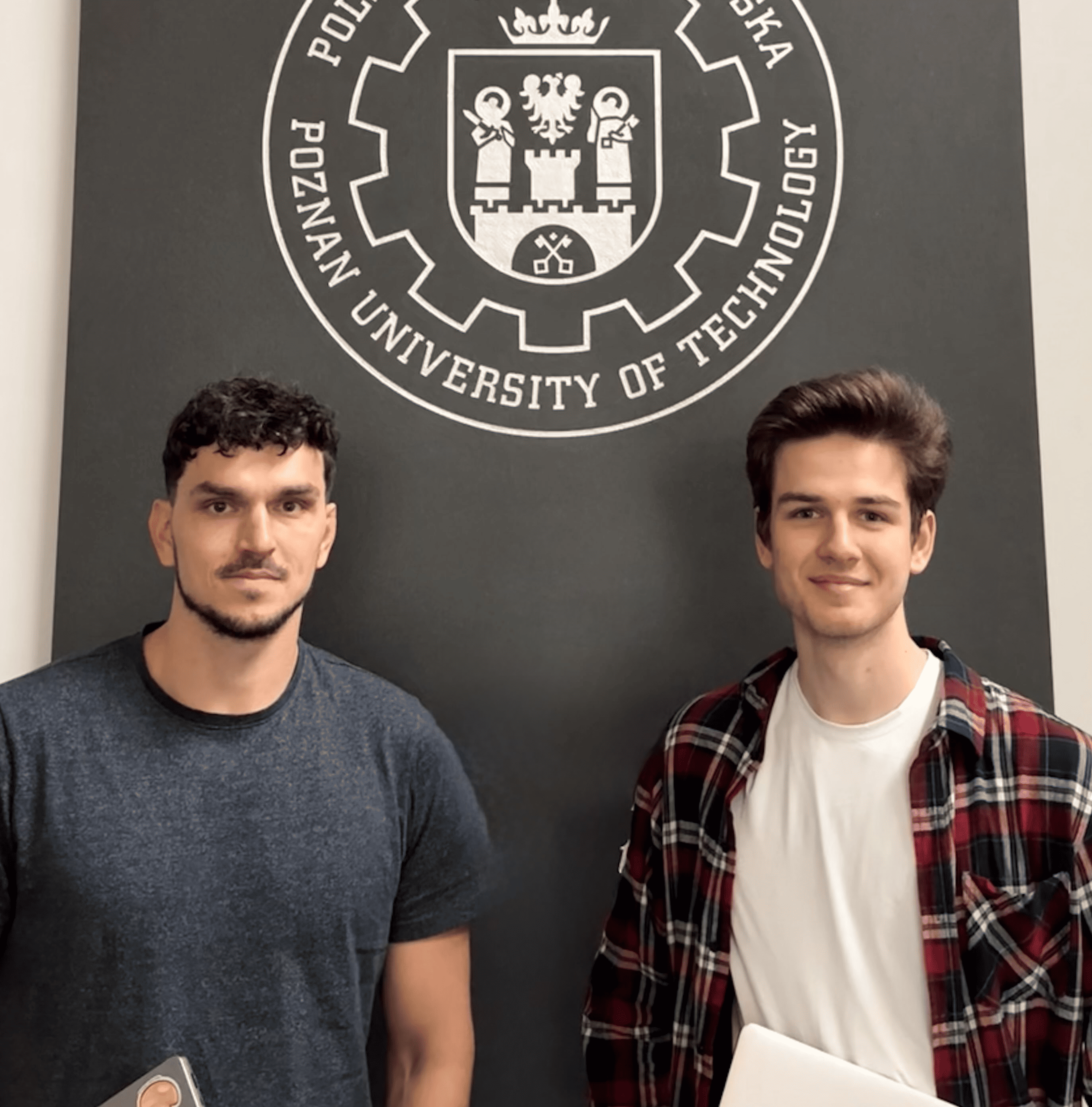

Teaching Machines to See Forests: ML-Powered Tree Classification for QGIS
by Jakub Drzymala, Mateusz Konat | Students | Poznan University of Technology
Show infoBiography:
Jakub is an DevOps and Platform Engineer, working with Kubernetes, different Cloud Providers, programming scripts and way too much yaml. Born in the 90's in Berlin, he help companies build products from zero to one, deploying and maintaining them in production.
His particular interest lies in making painful processes more pleasant, by using Infrastructure as a Code, Terraform, Ansible, automation, pipelines, Kubernetes, scripting and cloud. He is a technocrat building new tools every day.
He spend a lot of time learning new skills and actively help other people learn software development and become tech-savvy through a variety of help groups and through writing own code. Besides programming, He is passionate about fighting sports, from Bruce Lee or old style Greco-Roman to modern MMA. He really like hiking in the mountains, sailing and motorcycles.
Mateusz is a first-year Artificial Intelligence student at Poznań University of Technology with a strong interest in the intersection of AI and biology. He is an active member of the GHOST machine learning science club, where he contributes to a Building an ML Model for Tree Recognition project in collaboration with the IRIM Institute. He has also worked on predicting ankylosing spondylitis risk based on HLA-B27 clades in European populations.
As a GHOST members, they are participating in the IRIM project, developing a tree classification model for the QGIS Deepness Plugin, which they would like to show you during their short Lightning Talk during this year GHOST Day.
Abstract:
The GHOST student research club, in collaboration with the Institute of Robotics and Machine Intelligence (IRIM) at Poznan University of Technology, is at the forefront of utilizing machine learning for tree classification through the QGIS Deepness Plugin. In this presentation, we will share our journey of developing machine learning models that automatically identify tree species from aerial and satellite imagery, thus enhancing environmental analysis and urban planning efforts.
We will guide you through the essential phases of our project, including data collection, preprocessing, and model training using readily available resources, along with our current results. Additionally, we will discuss the challenges we encountered, such as managing a diverse range of tree species and optimizing model performance.


Speak so a physicist can understand you! TetrisCNN for detecting phase transitions and order parameters
by Kacper Cybiński | Student | University of Warsaw
Show infoBiography:
He is a master's student at the Faculty of Physics at the University of Warsaw (UW), majoring in Quantum Physics and Chemistry within the framework of the Individual Research Studies program. He holds a bachelor's degree from the College of Inter-Faculty Individual Studies in Mathematics and Natural Sciences (MISMaP) at the University of Warsaw, with a specialization in physics. Alongside academic development, he is actively engaged in social initiatives, organizing leading scientific conferences in Poland in the fields of quantum physics, optics, and photonics.
During his studies, he gained valuable research experience through scientific stays at the Institut de Ciències Fotòniques (ICFO, Spain) and The Flatiron Institute (New York, USA), where he pursued scientific interests at the intersection of artificial intelligence and quantum physics. These activities were supported by the Excellence Initiative – Research University (IDUB) program.
He actively participates in international conferences, presenting his research through talks and scientific posters. He has been involved in projects funded by the National Science Center, the European Research Council (ERC), and the Ministry of Science and Higher Education, including initiatives such as “Best of the Best 4.0.” In recognition of his scientific achievements, he was awarded a scholarship from the Minister of Science and Higher Education in 2024.
In his free time, he enjoys sailing, hiking, climbing, and traveling in search of exceptional cuisine.
Abstract:
Recently, neural networks (NNs) have become a powerful tool for detecting quantum phases of matter. Unfortunately, NNs are black boxes and only identify phases without elucidating their properties. Novel physics benefits most from insights about phases, traditionally extracted in spin systems using spin correlators. Here, we combine two approaches and design TetrisCNN, a convolutional NN with parallel branches using different kernels that detects the phases of spin systems and expresses their essential descriptors, called order parameters, in a symbolic form based on spin correlators. We demonstrate this on the example of snapshots of the one-dimensional transverse-field Ising model taken in various bases. We show also that TetrisCNN can detect more complex order parameters using the example of two-dimensional Ising gauge theory. This work can lead to the integration of NNs with quantum simulators to study new exotic phases of matter.
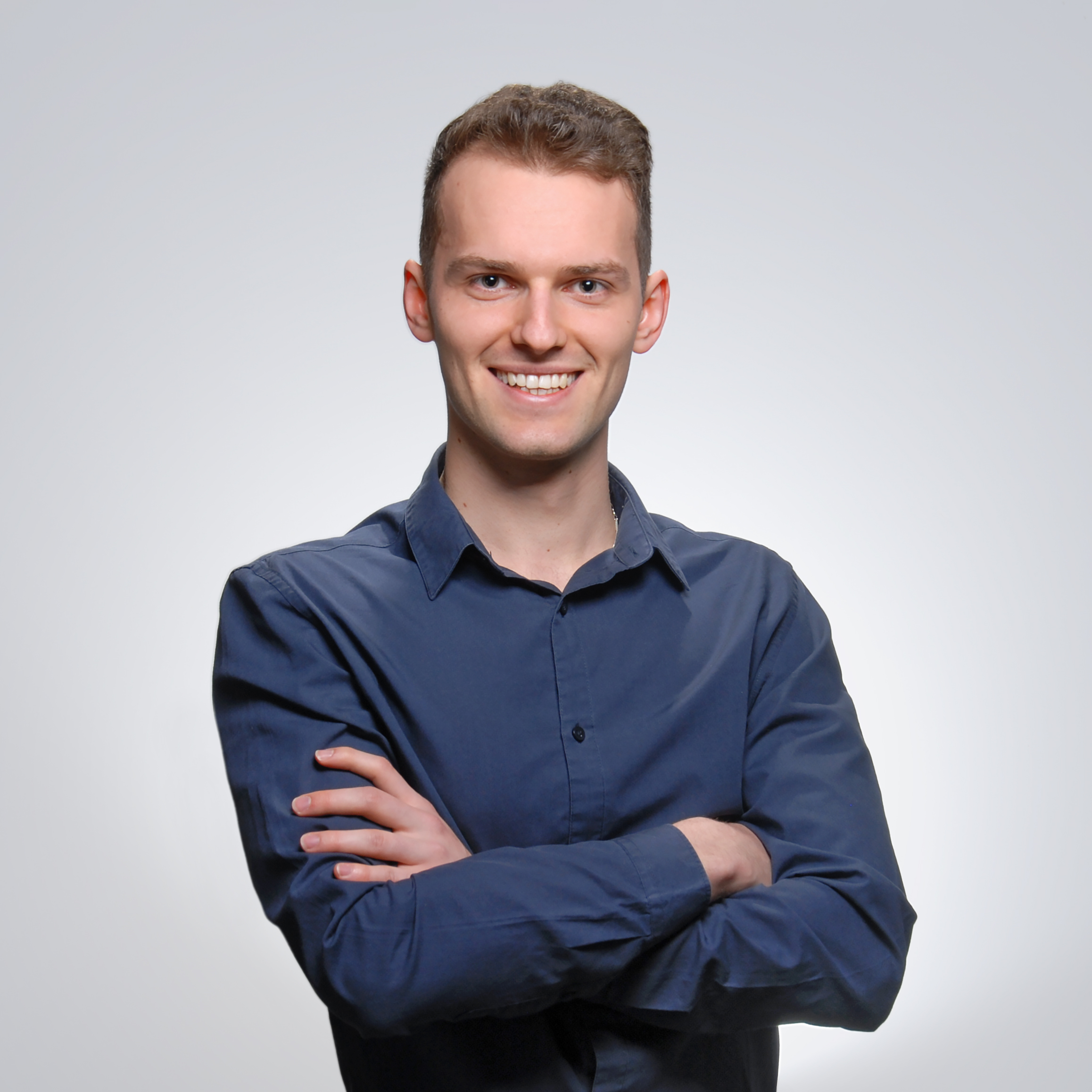

DetoxAI - Python Package for Debiasing Neural Networks
by Łukasz Sztukiewicz | Student | Poznan University of Technology
Show infoBiography:
Łukasz Sztukiewicz holds a Bachelor of Science degree in Artificial Intelligence from Poznan University of Technology. He participated in the prestigious Robotics Institute Summer Scholar Program at Carnegie Mellon University and currently works as a machine learning engineer at molecule.one.
Abstract:
The lack of specialized debiasing methods and appropriate software frameworks leaves a critical gap in addressing fairness issues for machine learning systems. To address these challenges, we present DetoxAI, a Python-based software framework for post-hoc debiasing of neural networks in image classification tasks. Designed with deep learning in mind, DetoxAI integrates state-of-the-art interventions, evaluation metrics, and visualization tools into a unified, production-ready ecosystem. Our approach applies post-training adaptation, allowing users to mitigate bias while maintaining model performance. By focusing on high-level semantic representations, DetoxAI addresses the unique challenges posed by vision data, where proprietary attributes such as race or gender are not explicitly encoded. This toolkit provides a modular interface for bias mitigation, making it accessible and adaptable for real-world applications. Through experimental studies, we quantitatively demonstrate that DetoxAI reliably improves upon baseline vanilla models on a fairness-performance tradeoff. Furthermore, we qualitatively show with attribution maps that DetoxAI's methods can shift the model's focus away from protected attributes.


MisterCar - AI agents for every virtual environment
by Kacper Wachnik | Student | Poznan University of Technology
Show infoBiography:
He is a computer science engineer and a master's student in artificial intelligence, passionate about coding, automation, and AI agents. He is dedicated to knowledge sharing through talks, articles, and video courses.
His journey in AI began with DeepMind's AlphaZero chess system, reflecting his love for the game. His interests later evolved to include computer vision and autonomous vehicles, and eventually expanded to large language models and AI agents following the release of ChatGPT.
With professional experience in automating recruitment processes at a startup, he is currently developing his own agentic framework for researchers and developers.
When not immersed in AI, he enjoys action-adventure books, watching and playing chess, and listening to epic soundtrack music from movies and games.
Abstract:
MisterCar is a new framework built on the Sense-Plan-Act architecture that enables AI agents to perceive, understand, and interact with any virtual environment. Developed initially during autonomous driving research, MisterCar has evolved into a versatile toolkit with equal strength in two key domains: Video Game integration for researchers to transform games into experimental AI environments, and Computer Use automation that brings advanced capabilities to business workflows, GUI navigation, and process automation.
MisterCar provides unprecedented contextual richness through its specialized sensors — capturing screenshots, recording audio, monitoring input devices, interfacing with external hardware, and even inspecting memory and files. Combined with comprehensive deep learning support, you can train custom agents rather than relying solely on existing models.